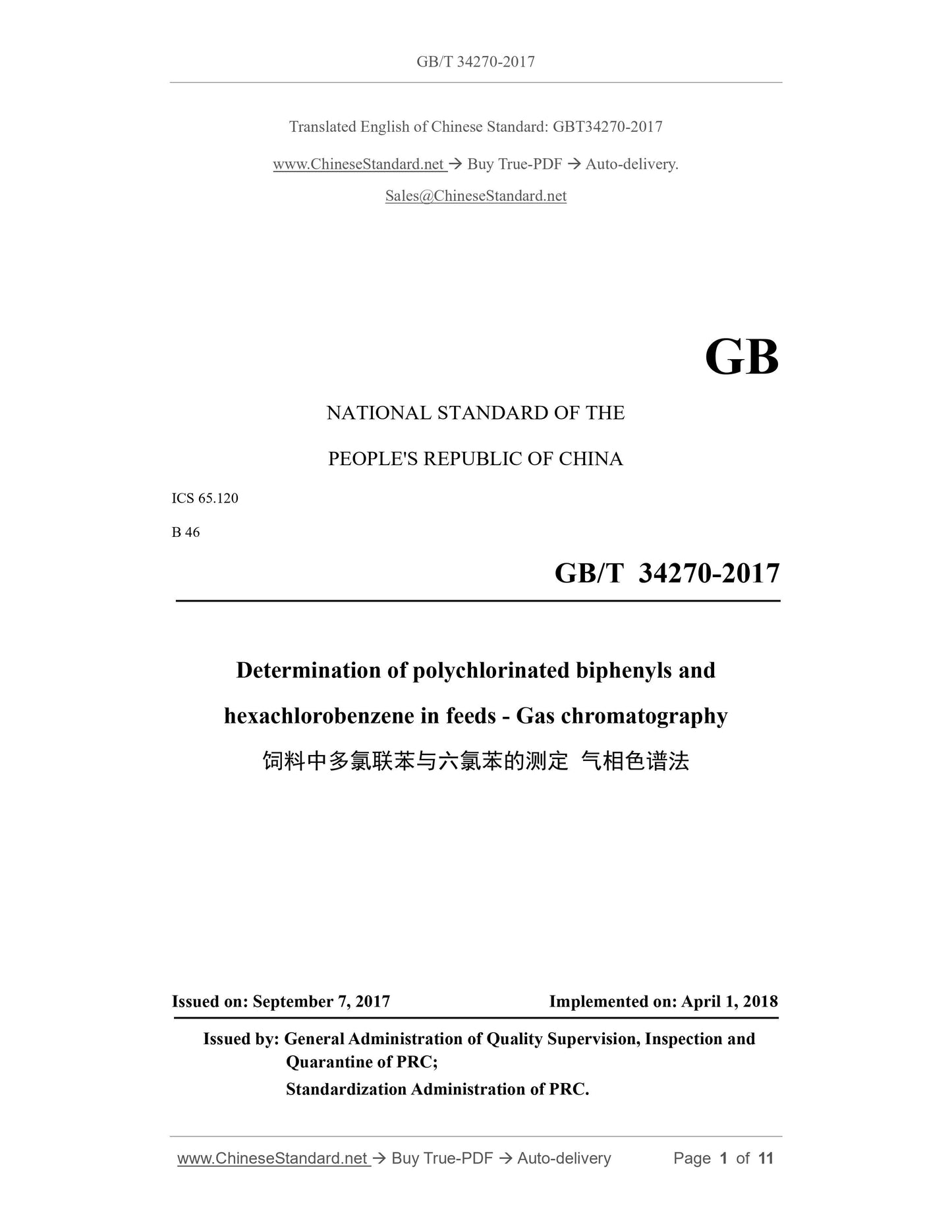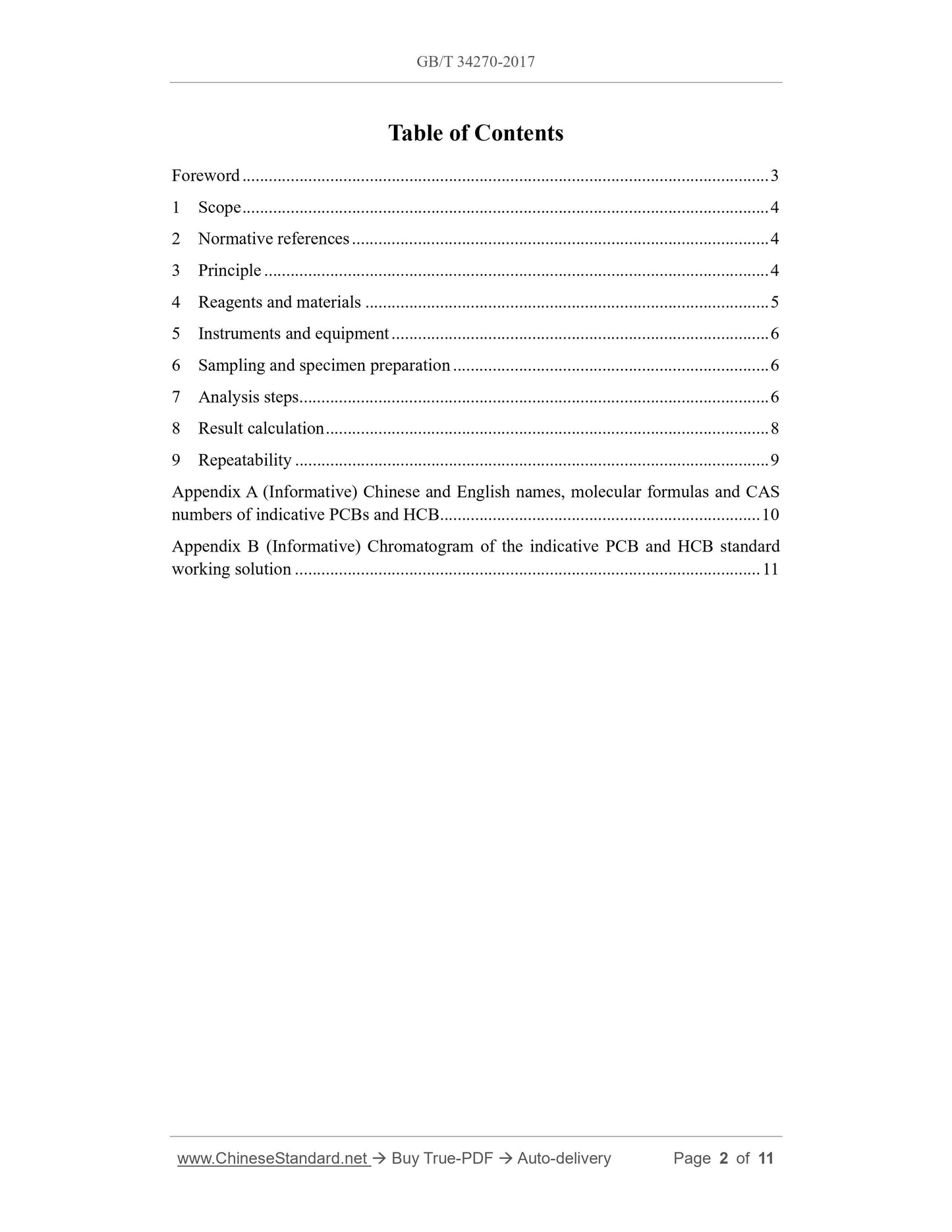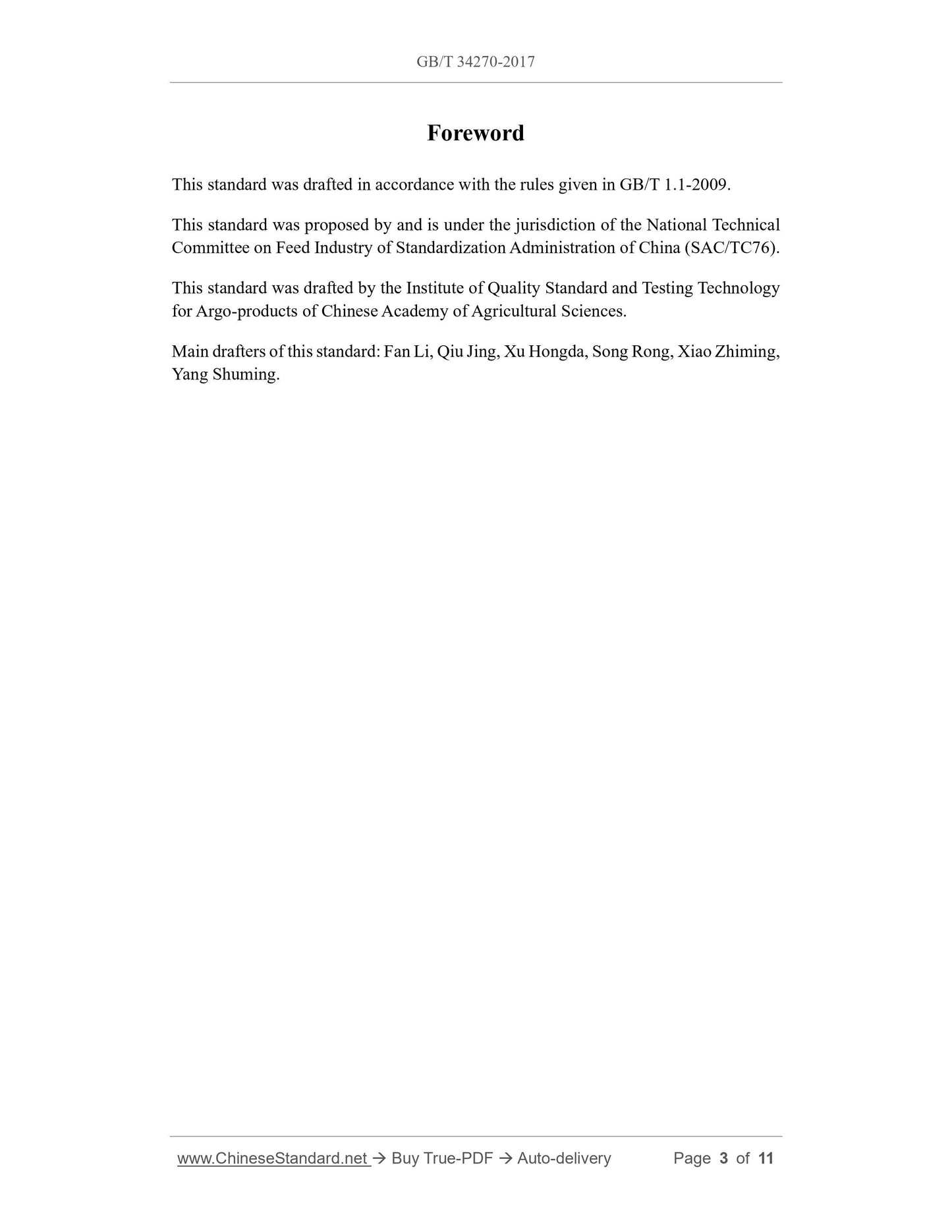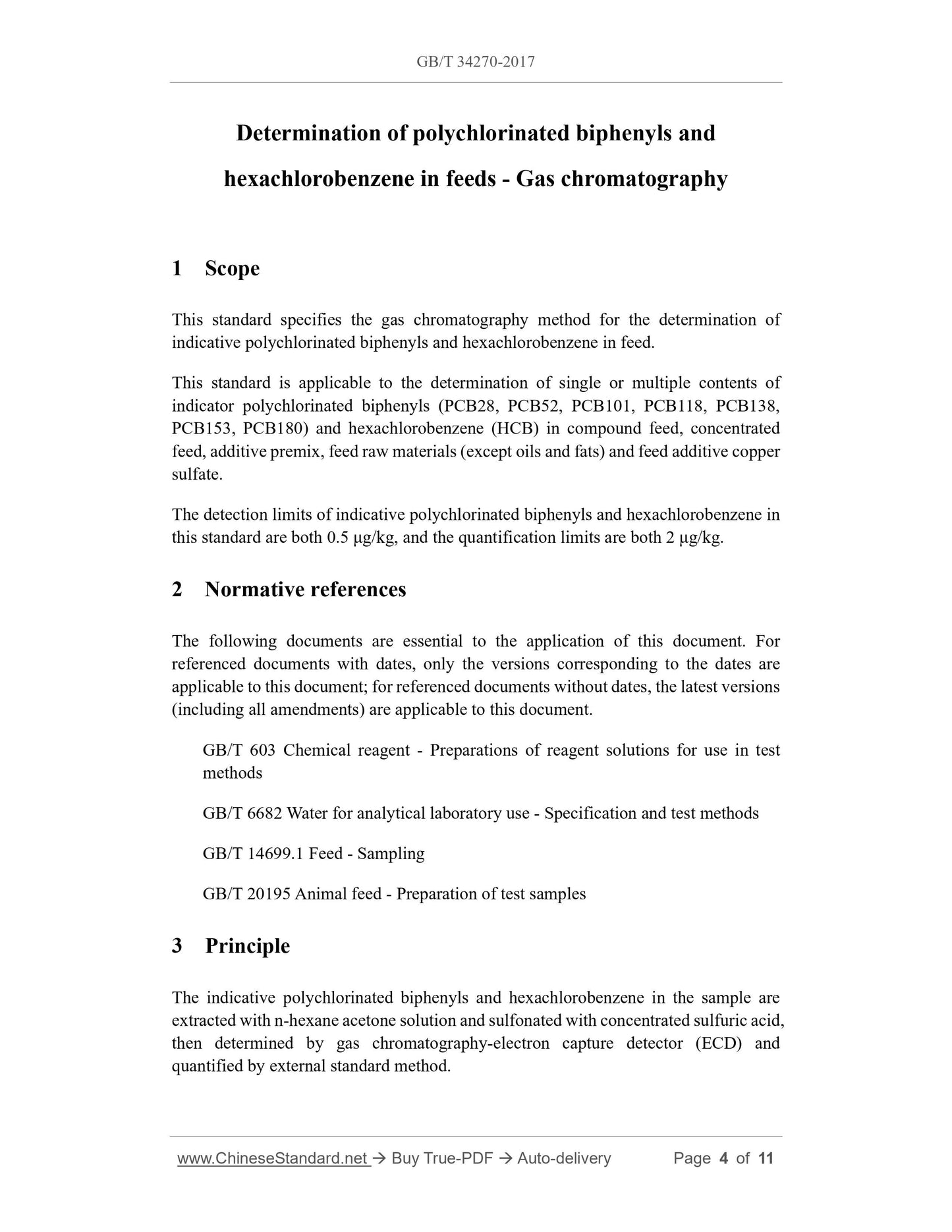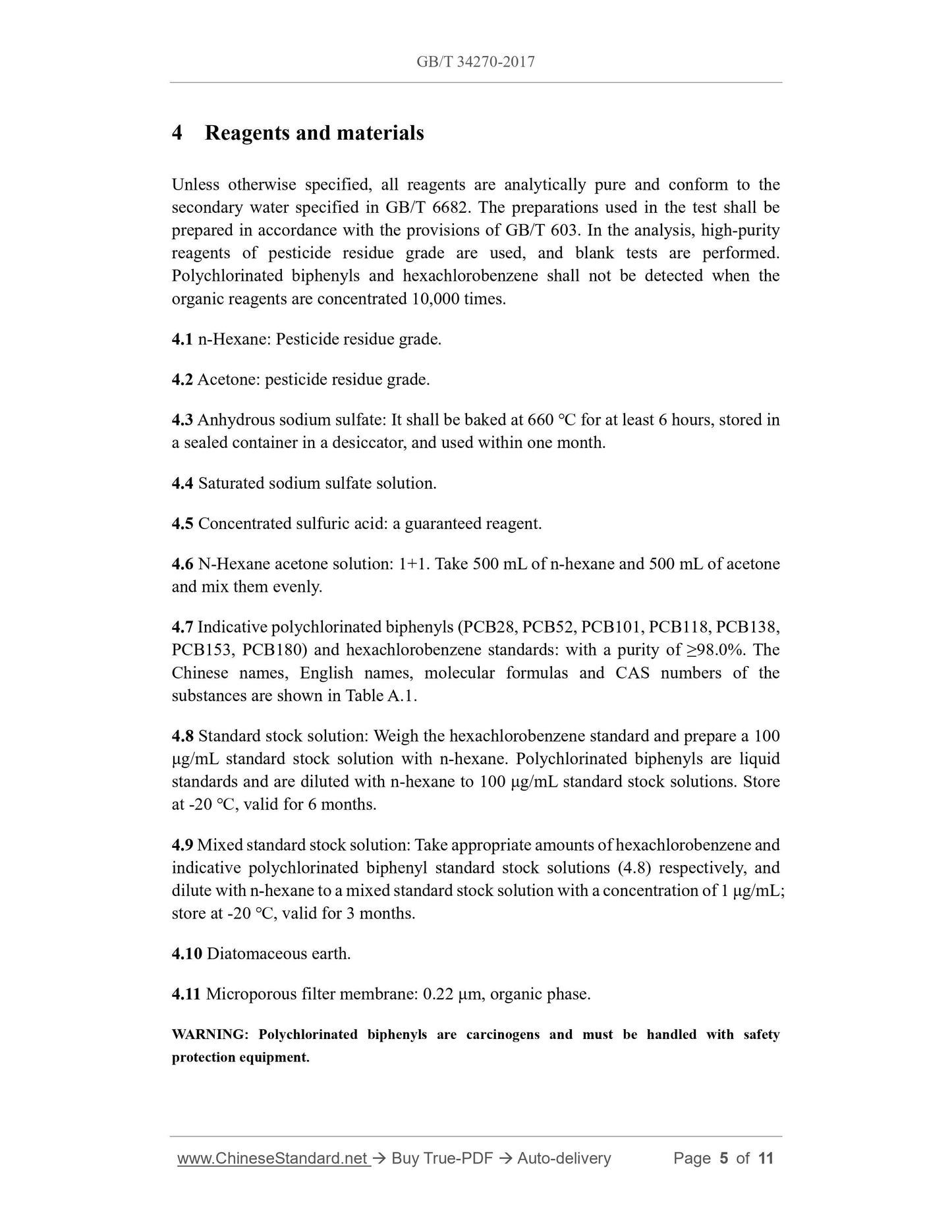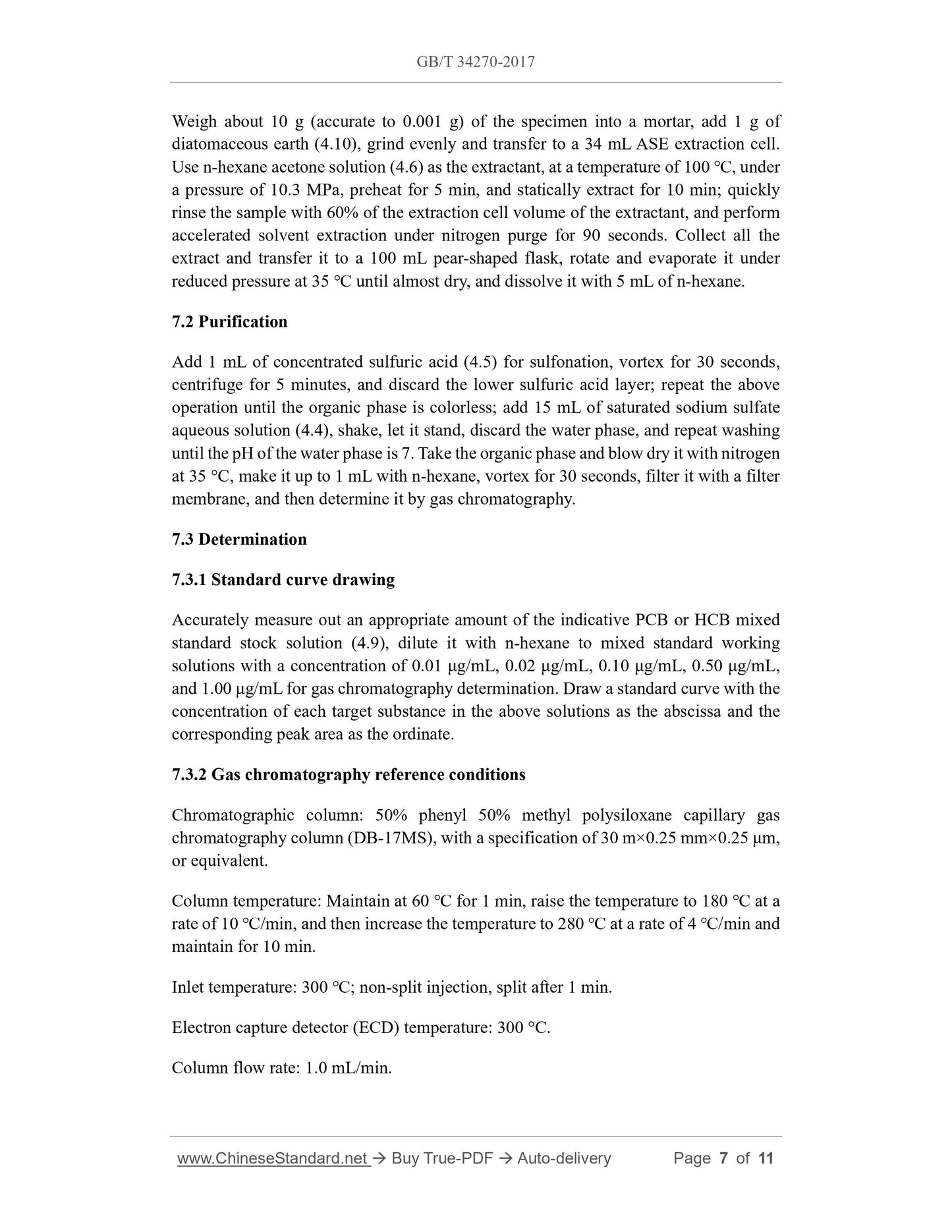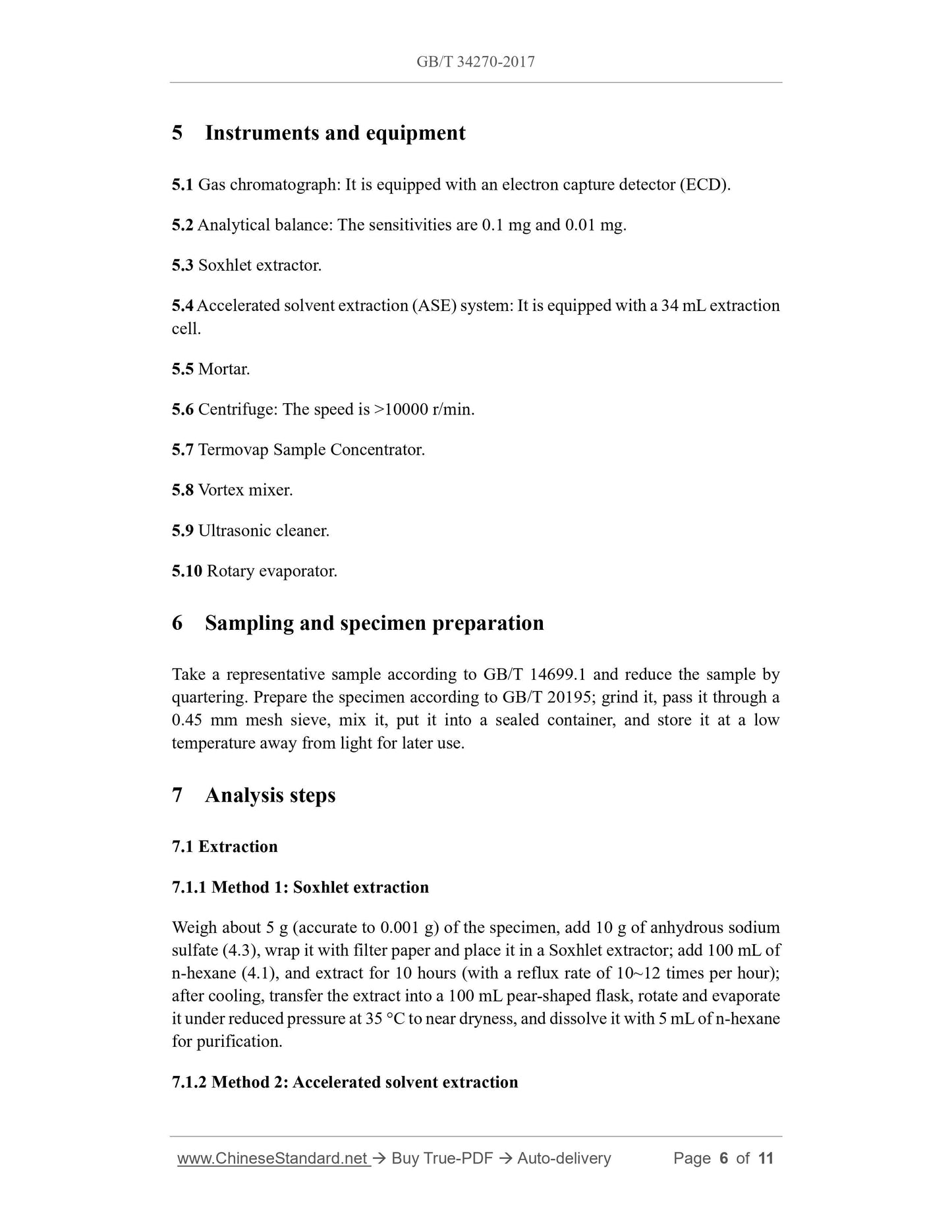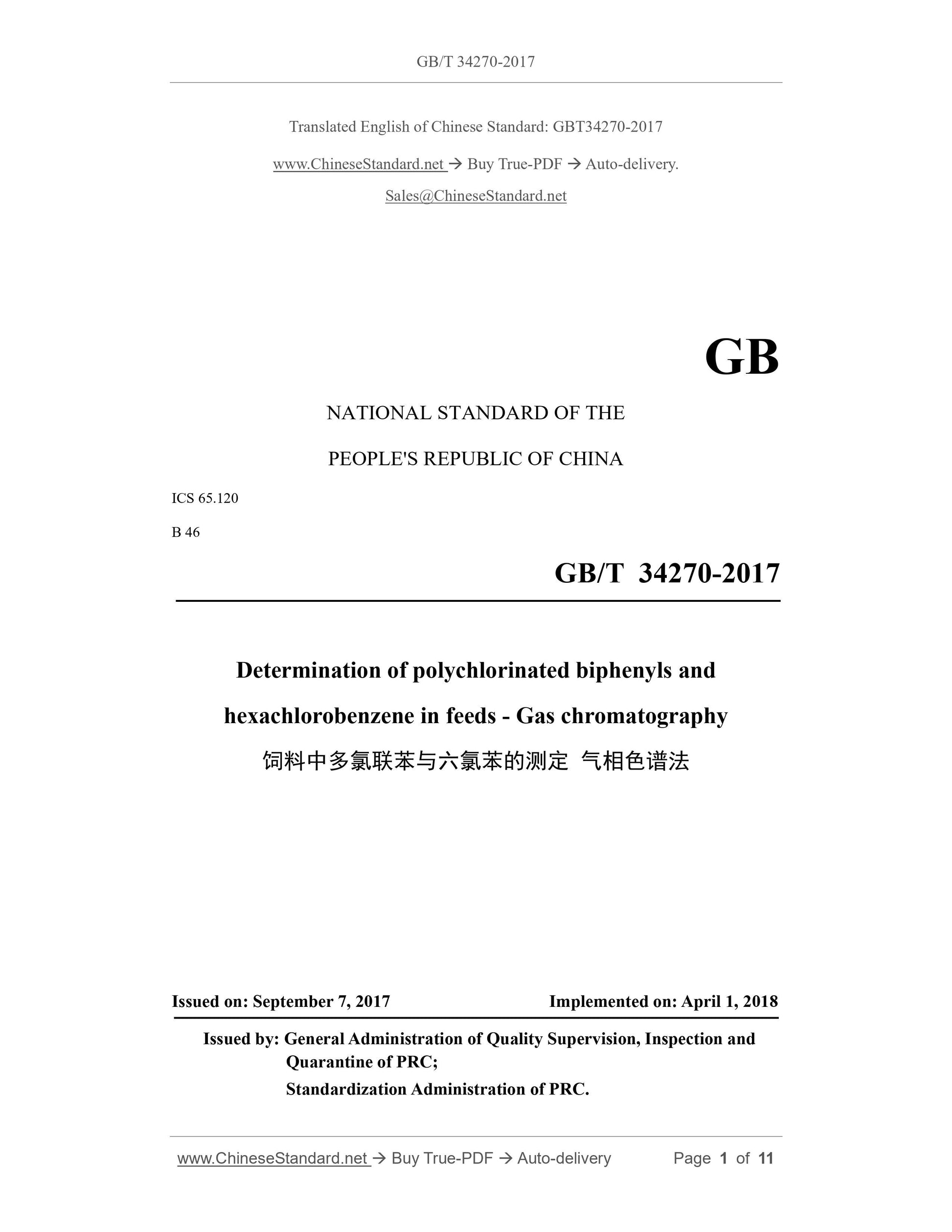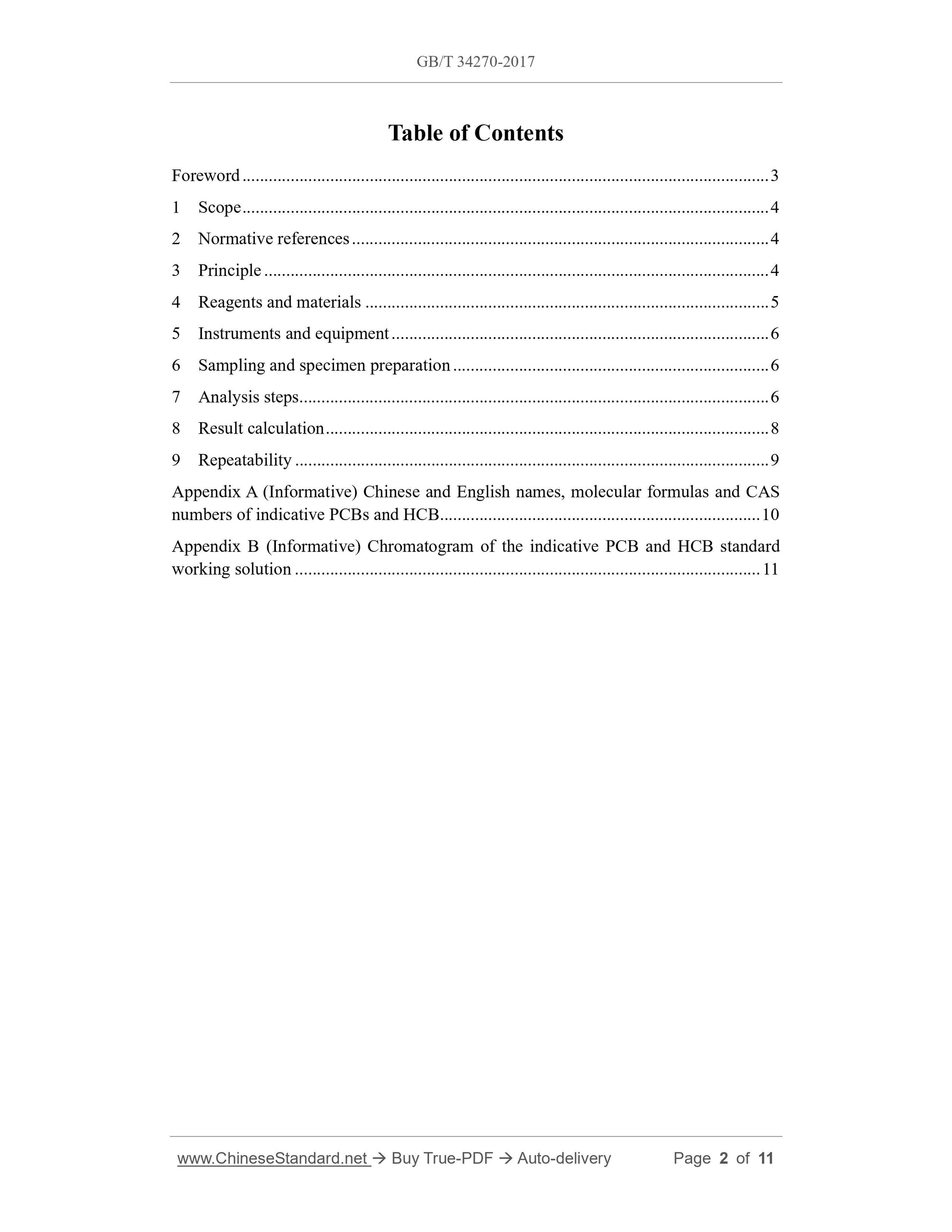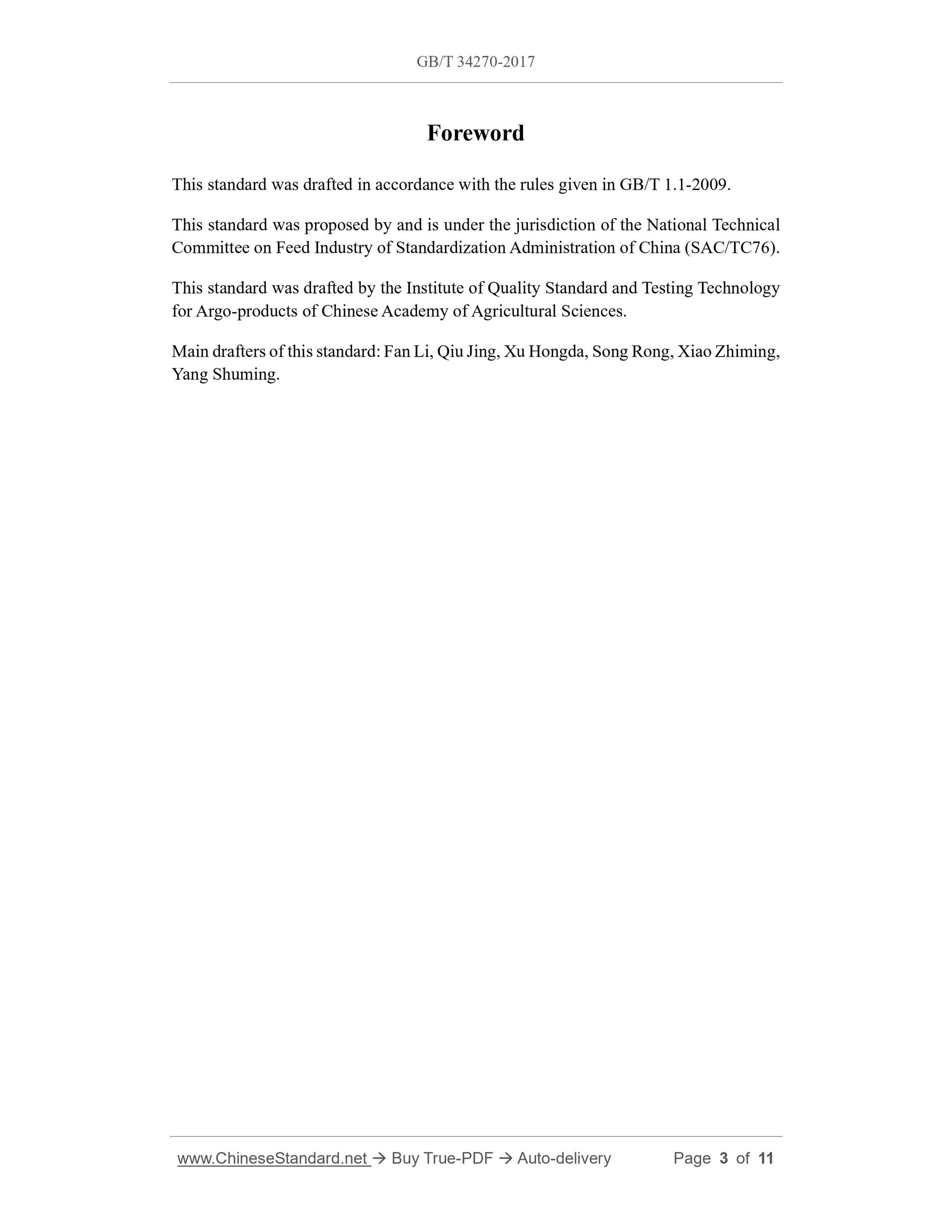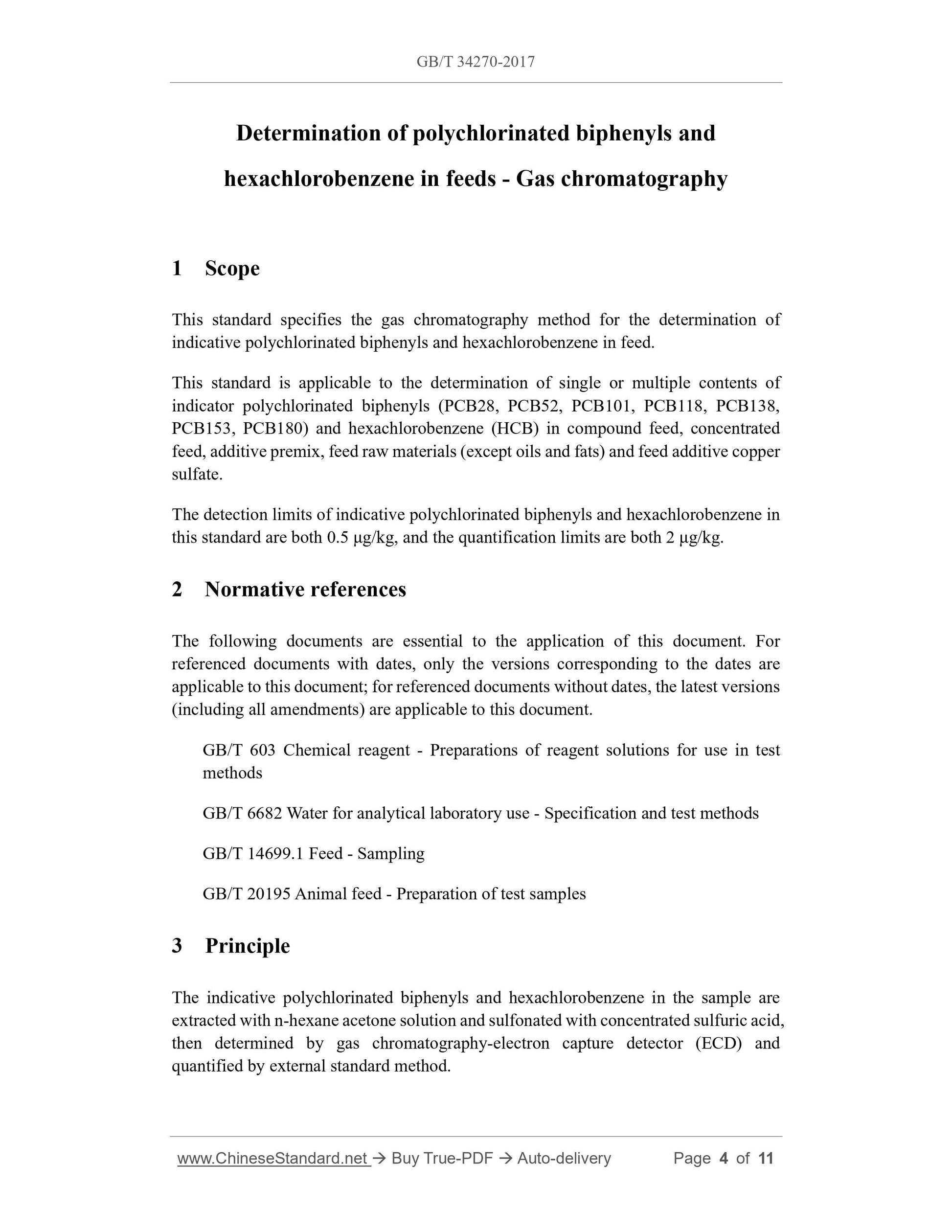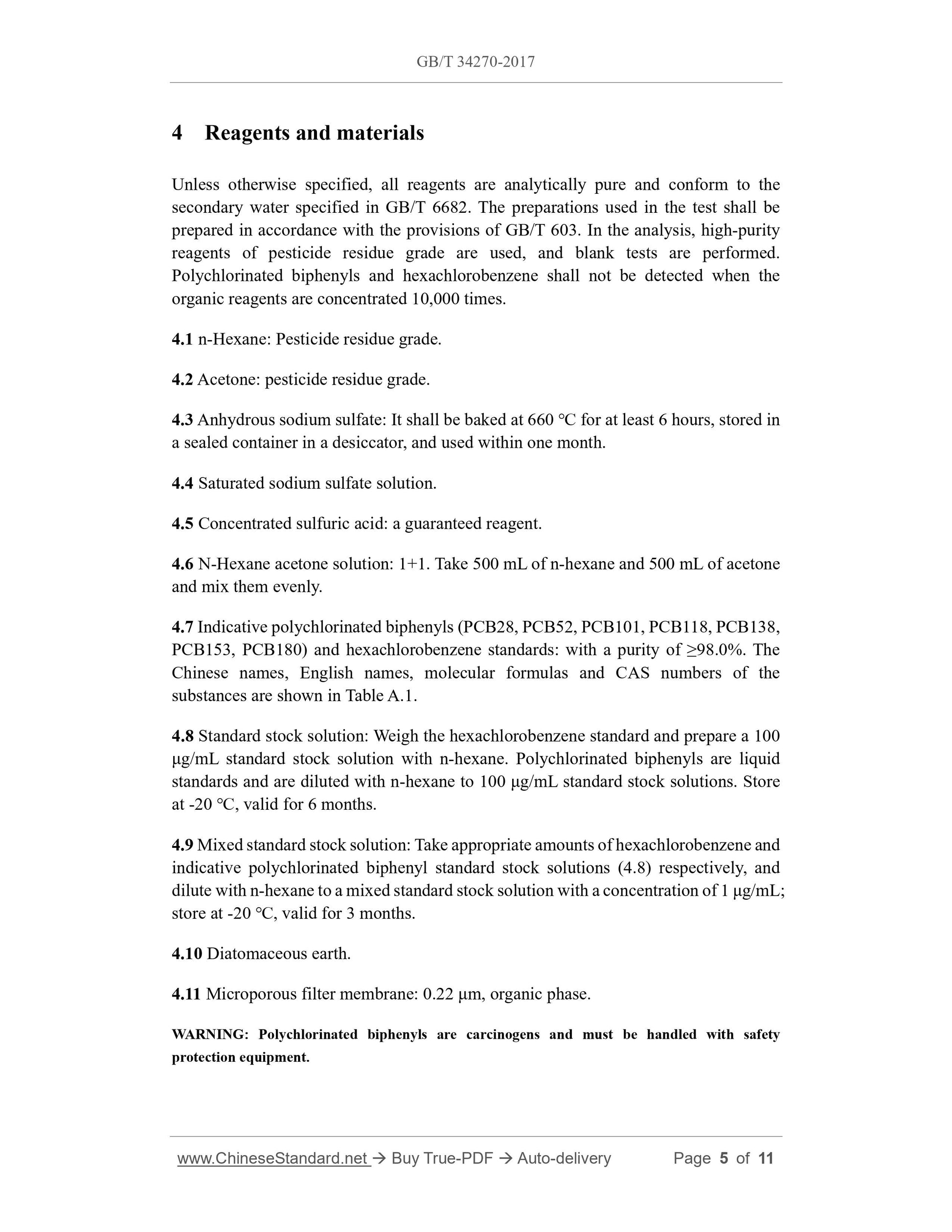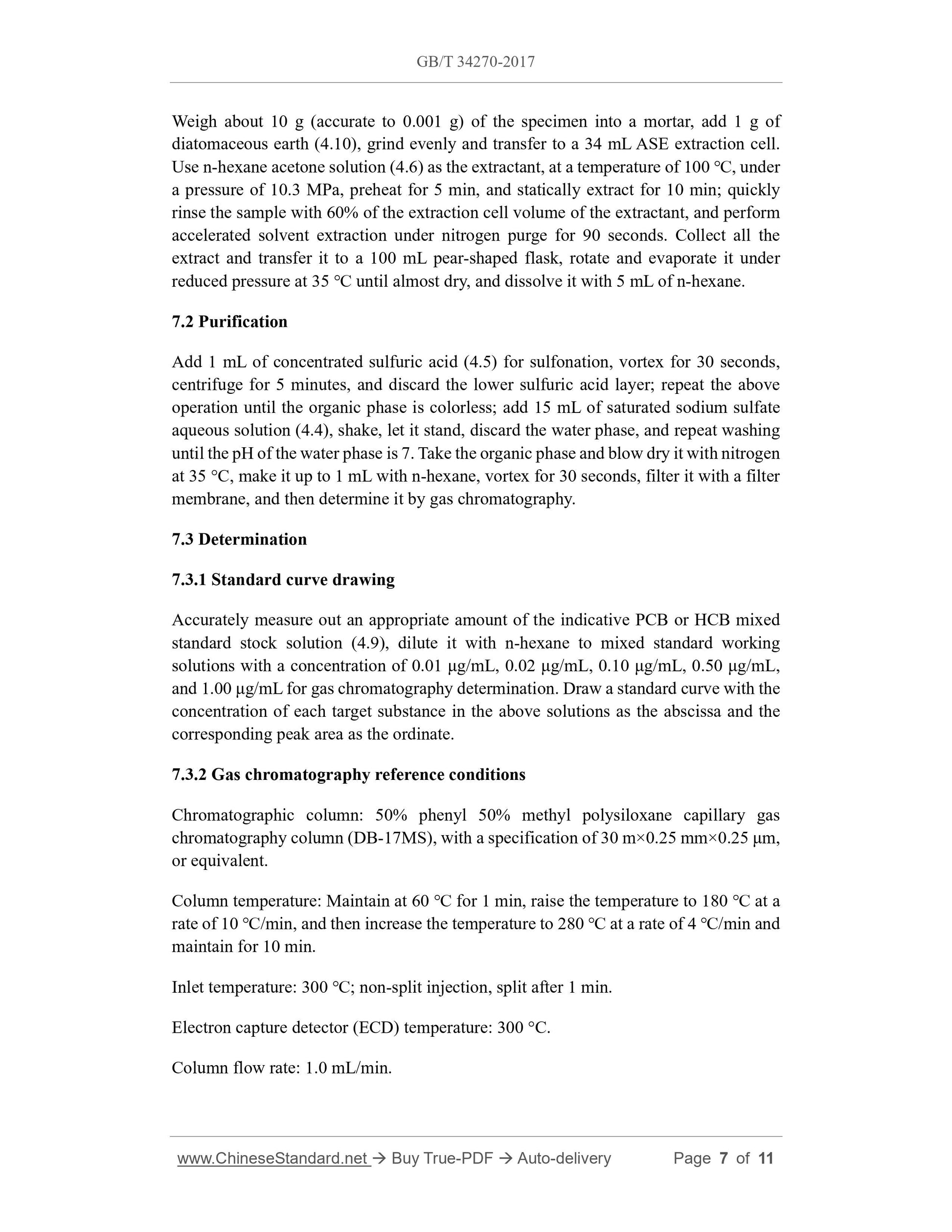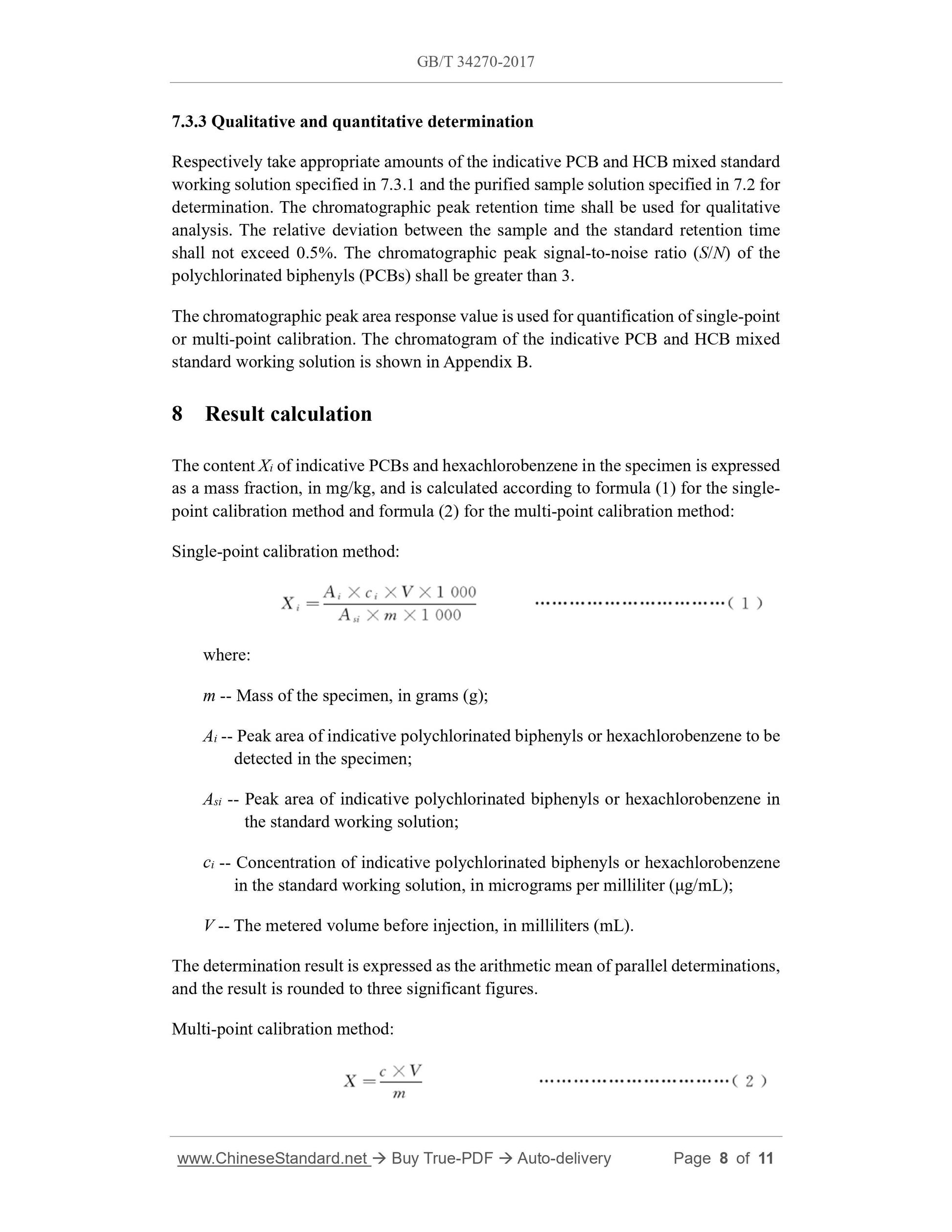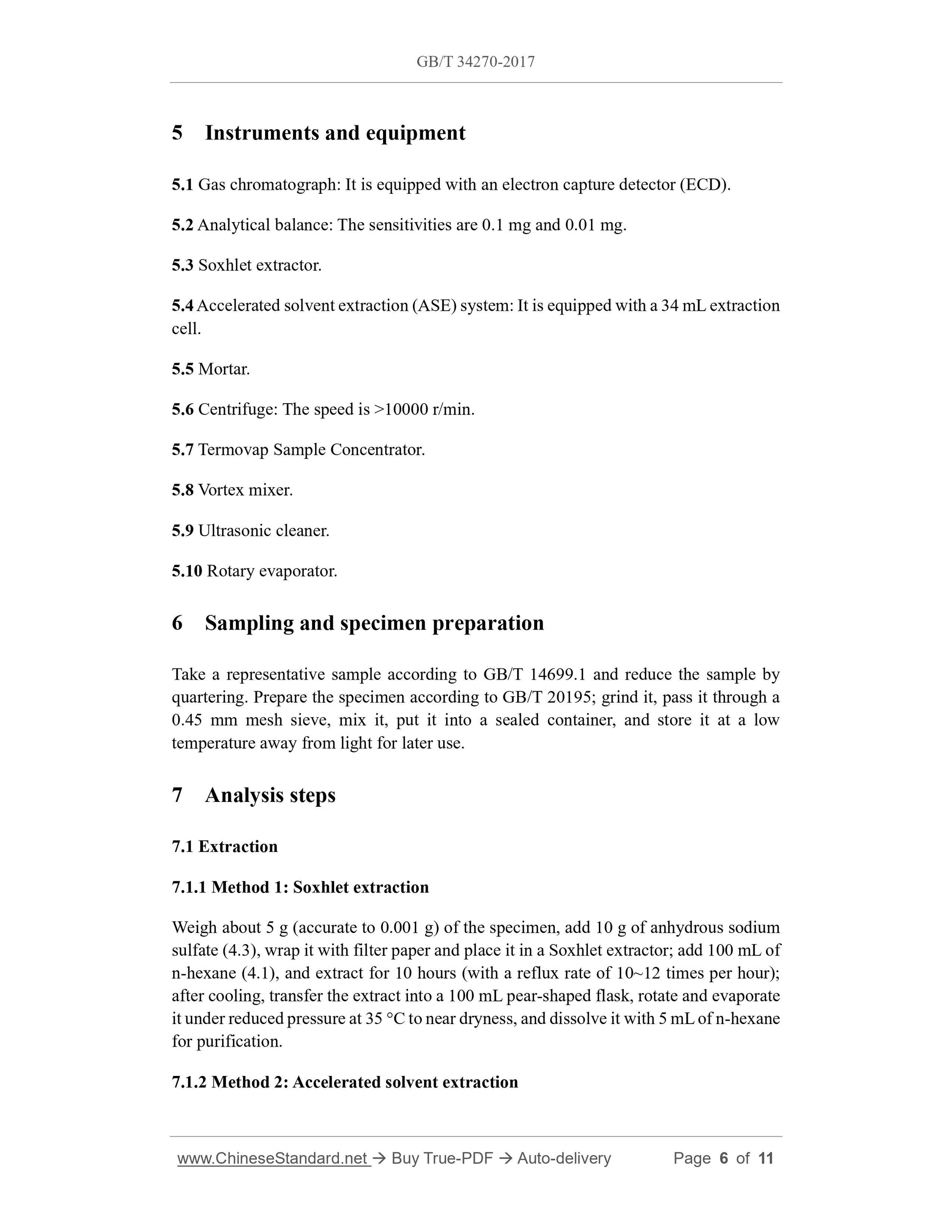1
/
of
8
www.ChineseStandard.us -- Field Test Asia Pte. Ltd.
GB/T 34270-2017 English PDF (GB/T34270-2017)
GB/T 34270-2017 English PDF (GB/T34270-2017)
Regular price
$165.00
Regular price
Sale price
$165.00
Unit price
/
per
Shipping calculated at checkout.
Couldn't load pickup availability
GB/T 34270-2017: Determination of polychlorinated biphenyls and hexachlorobenzene in feeds - Gas chromatography
Delivery: 9 seconds. Download (and Email) true-PDF + Invoice.Get Quotation: Click GB/T 34270-2017 (Self-service in 1-minute)
Newer / historical versions: GB/T 34270-2017
Preview True-PDF
Scope
This standard specifies the gas chromatography method for the determination ofindicative polychlorinated biphenyls and hexachlorobenzene in feed.
This standard is applicable to the determination of single or multiple contents of
indicator polychlorinated biphenyls (PCB28, PCB52, PCB101, PCB118, PCB138,
PCB153, PCB180) and hexachlorobenzene (HCB) in compound feed, concentrated
feed, additive premix, feed raw materials (except oils and fats) and feed additive copper
sulfate.
The detection limits of indicative polychlorinated biphenyls and hexachlorobenzene in
this standard are both 0.5 μg/kg, and the quantification limits are both 2 μg/kg.
Basic Data
| Standard ID | GB/T 34270-2017 (GB/T34270-2017) |
| Description (Translated English) | Determination of polychlorinated biphenyls and hexachlorobenzene in feeds - Gas chromatography |
| Sector / Industry | National Standard (Recommended) |
| Classification of Chinese Standard | B46 |
| Classification of International Standard | 65.120 |
| Word Count Estimation | 10,181 |
| Date of Issue | 2017-09-07 |
| Date of Implementation | 2018-04-01 |
| Issuing agency(ies) | General Administration of Quality Supervision, Inspection and Quarantine of the People's Republic of China, Standardization Administration of the People's Republic of China |
Share
